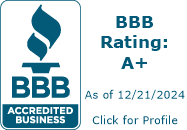How large is your digital footprint? Do you have a website? Social media profiles? Are you running paid ads on your social media profiles? Do you have a profile on the top local directories?
These, and many other questions, should be at the forefront of your mind right now. Old media is dying off, and while we still think you should take advantage of print ads, direct mail, and fliers, you should also diversify your marketing footprint by getting into the digital space. If you don’t know where to start, or need a little bit of help multiplying your efforts, the following guide will give you information you can use to make sure your digital marketing is strong.
Let’s start with establishing your footprint.
Jump to a section:
- Step 1: Establishing your footprint
- Step 2: Getting technical
- Step 3: Relationship marketing
- Real estate agent marketing plan checklist
Step 1: Establishing your footprint
Build your own website
50% of buyers found their home through the internet. If you don’t have a website, you’re losing out on these potential buyers. Not only that, but your competition is growing. It’s no longer Tammy from up the street that’s your competitor. You’re also competing against real estate selling websites like Trulia, Zillow, Realtor.com, and Redfin to move listings. If you want to compete against them, and Tammy from up the street, you need a website too.
With options like WordPress, Wix, and Squarespace to help you create and launch a beautiful website, you have templates and examples to follow and emulate. You can piggyback off a design you love, and add your own flourishes and touches to make it your own.
Create social media accounts
Sure, you can take out an ad in your local newspaper or magazine, but do you know how much you’ll spend on that ad? It can run you from a couple of hundred dollars to a couple thousand. Is that an expense you can incur right now? Local newspapers and magazines can also limit your exposure. That may not mean much to you if you’re just starting out, but as you’re growing, you want the largest footprint for your brand. So what else could you use that money on?
Social media can help you widen that footprint by getting you in front of different audiences. Instead of being limited by the subscription reach of the paper or magazine, you can invest your print ad budget in social media ads. You’ll get a better ROI this way because you can specifically target your desired audience. You can also micro-target your immediate area with paid ads to promote yourself. Spending a little bit of money to produce an ad on Facebook and Instagram can bring you additional clients, and additional potential sales and listings. Social media is a game of branding. Combining promotional ads on Instagram stories and facebook feeds with local targeting (keep it within 25 miles of your service area), with a dedicated website, Local SEO, and customer reviews will provide a strong online reputation that should begin to bring in additional clients, without the need to constantly ask for referrals.
As you gather data from your website and your social media accounts, you’ll see who your audience is and where they’re from. Use this data to re-engage those audiences with news, offers, and events.
Get on local directories
Search Engine Optimization (SEO) involves your on-page signals from your website, and off-page signals from your Internet presence. One way to monitor and control your off-page signals is to optimize your Local SEO by signing up for, and filling out, directory accounts.
These directories are great ways to validate your essential information, known as UNAP. UNAP stands for
- URL
- Name
- Address
- Phone Number
You can see why this information would be important, right? If people search for you on Yelp, YP.com, Google My Business, Bing, or any other local directory, you want them to find your correct information. Otherwise, you’re losing out on a lot of potential clients and potential revenue.
Getting all of your potential revenue isn’t the only reason to optimize and monitor your UNAP. Search engines also reward you for having all your information synced across all the data sources. Yep, you get rewarded for doing the right thing. Awesome, isn’t it?
Here’s a tool from Moz to check basic data aggregators to make sure you’re good to go. Just remember that Moz shows some, but not all, the data sources. You’ll need to do a little manual checking of your own to keep track of your UNAP.
Step 2: Getting technical
Now that you’re established your footprint, it’s time to get into some technical SEO.
Optimize website speed
Your website needs to load in under two seconds. After that. potential visitors bounce. All of that lost traffic is potential lost revenue. Your website needs to be fast. End of story.
Making sure your website is fast isnt as hard as it sounds. First, you can use Google’s page speed tester to find out your site’s page speed, and what you could fix. We’ll give you a look under our hood right now, so you can see what the page speed tester looks like:
Mobile page speed looks good. Our site is faster on desktop, though:
After you use the page speed tester and find out your website’s stats, you’ll probably see some things you can fix. You should bucket them in this order of priority to make the most impact on your website:
- Properly size images
- Get rid of javascript code that blocks Google from crawling the web page
- Simplify your code
- Enable text and image compression
Talk to your developer about how to get all that done. If you’re using WordPress, there are plugins that you can install that will automatically help your website’s speed. Here’s a list of vetted ones we use:
- Async Javascript
- BJ Lazy Load
- Cache Enabler
- Compress JPEG & PNG images
If you decided to use squarespace.com to host your website, then here are a few things you can do to improve your speed:
Conduct keyword research
When you type something into Google, Bing, Yahoo, or Youtube, you’re using keywords and keyphrases to conduct a search. You could be looking for a local restaurant, trying to find a Halloween costume, or searching for the cheapest flight for an upcoming vacation. Keywords and keyphrases are how search engines know what web pages are talking about. That lets them know which ones to surface, depending on the keywords used in the search.
Here’s an example. If you search “crunchy links” in Google, you’ll see this:
Yes, it’s our company name, but it pops up in the first position, and we have our Google My Business connected, as well. What happens if another real estate agent shares your name? Leaving a keyword footprint can help you appear at the top of results pages, if you do the proper research, and have a wide footprint. You can also see we’re trying to rank for “digital marketing” and “SEO for small business.” These keywords and keyphrases, also with our company name, tell search engines who we are and what we do. Eventually, the hope is when people type in “SEO for small business” our name comes up near the top.
Take a look at the image again. People who search our name are greeted not only with our website, but also our Google My Business page. We’re building a wide footprint that entails on-page (website) and off-page (local directory) SEO.
Another example, which will show the importance of keyword research in conjunction with content marketing. We published “How much does it cost to start a barbershop” on May 1st, 2019. As of September 23rd, 2019, it ranked on the first page for the term:
Another piece in this series on our blog, we published “How much does it cost to start a bar” on May 1st, 2019:
As of September 23rd, 2019, is ranked on the 3rd page of Google:
That may not seem good, but page 1 is littered with pieces from Entrepreneur Magazine, Investopedia, and Chron.com. It’s going to be difficult to beat them out, especially with only about 4-5 months of ranking potential for the blog post.
See how important keyword research is? See how it can help you in a number of ways? Once again, all it takes is time and effort to take advantage of this SEO tactic.
Inject schema
Okay, now we’re getting a bit more in the technical weeds. Schema is probably something you’ve never heard of before. Schema is a code that you add to sections of your website to further help search engines learn more about what’s on your webpages.
A great example for real estate agents would be to add “real estate agent” to markup your homepage, and “product” for individual listings. You can even markup individual property photos with “photo” schema.
What makes schema technical is injecting the code on your website. But there are a lot of options that take that technical complexity away, like schemaapp.com.
Here is an example of what schema code looks like, from schema.org:
Make sure you’re injecting the right code.
Build a healthy backlink profile
Before the Internet connected us to everything and everyone, “word of mouth” was a great way to get your company, product, or service validation. The new “word of mouth” is getting backlinks pointing to your website.
Search engines use backlinks to help them figure out who is really authoritative in specific marketplaces. If an authoritative website links to yours, that’s a vote of confidence that search engines see. The more legitimate websites that link to you, the more authoritative you’ll become to Google, Bing, Yahoo, and others.
The important word there was “legitimate.” Link building is time-consuming, and there can be more rejection than success in the beginning. This can lead to a lot of frustration. Some professional marketers, and people marketing for their own companies, try and skirt the hard work by purchasing links from websites. This strategy can work in the short term to build your authority and improve your ranking.
Until your phony links are flagged, and your website is penalized by Google and other search engines. Here are a few basic ways to build backlinks:
- Sponsor a few local non-profits and ask them to place a link on their website
- Ask a few local home design blogs if you can write a unique blog post about what home improvements increase the value of a home for them. Make sure to include a link to your website in the blog post you write.
- See who’s linking to your competitor, and ask websites like theirs to link to you
Step 3: Relationship marketing
Create a blog
The best way to go viral is with good content. Infographics, video, podcasts, guides. There are so many ways you can get yourself and your brand in front of new audiences, in exchange for sharing your expertise.
You’re experiencing the effect right now. This is a piece of content we wrote to help real estate agents understand marketing, and how to do some marketing for themselves. You might never have heard of us if not for this, and all we’re doing is sharing a bit of our knowledge with you.
Powerful tool, right?
And your content doesn’t need to live on your blog. You can create design assets and share some pull quotes from the piece and post it to attract additional traffic. You can also syndicate a large research piece or whiet paper with a larger publication, getting a backlink and additional traffic that way. By investing a little time and effort, you can build a following, and potential clients.
Create video walk-throughs for open house events
What happens if a potential buyer can’t make any of the open houses for a property? What happens if someone from out of the area wants to view the home, but cannot make your open house?
Instead of missing out on these potential clients, create a video open house using your phone, a GoPro, or a drone, and post it. Here’s an example of a video open house on YouTube.
Idea: Take your phone and make a video selfie. Walk through each house and explain to the camera what aspects of the house affect the appraisal value. Talk about the pros and cons, and what goes into negotiations when buying a home.
Not only will you extend the reach of your listing and show it off in an imaginative manner, you can also entice people who plan to sell their homes to use your services.
Ask clients for reviews
Reviews are one of the most important signals you can send to clients. If someone is closing in on using your services to sell their home, or if they want to purchase one of your listings, they need to learn about you. Your website is one way they learn about you.
Reviews are another.
This of it like this: whether you want to try a restaurant for dinner, shop for a product, or find the right real estate agent, you’ll look for reviews. We all feel better when we read the way others feel about the choice we’re about to make. We want to go with the wisdom of the crowd.
This is why reviews are so important, and why we suggest you work on your Local SEO. Having positive reviews is a huge ranking factor for search engines. Make sure to encourage honest reviews of your business on both Yelp and Google.
One last note on reviews: if you (for whatever reason) get a negative review, the best thing you can do is reply in a positive way. Most people just want to be heard, and potential customers will appreciate you taking the time to address any concerns.
Real estate agent marketing plan checklist
Target Service Area: Austin, Texas
Target Keywords to include on your website and Local Directories:
- Real Estate Agent in Austin, Texas
- Real Estate Agent in Austin
Website:
- What platform will you use?
- Google Sites
- Square Space
- WordPress
- Most important pages on your website:
- Home Page (About you)
- Contact
- Reviews
- Blog
- What topics will you write about on your blog?
- What to look for in your first home
- How to prepare your house to sell
- How to spot potential problems when house hunting
- When should you sell your home
- When is the best time to buy a home
- What websites will you reach out to and request to write a guest blog post for?
- Homedesignersintexas.com
- Beautifulbackyards.com
- Ultimateaustinhomes.com
*all domains are example domains, and should be replaced by your own research
Local Directories
- What local directories should you be on?
- Moz local (or Yext)
- Google My Business
- Bing My Business
- Yelp
- Yellow Pages
- Trulia and Zillow
- What is the first message you want clients to see?
- Put this message in your profile on each local directory
- Who can you contact to leave a review on your local directories?
Social Media Strategy
- What profiles should you have a presence on?
- Instagram (and IGTV)
- Youtube
- How much will you spend on facebook/instagram ads?
- $2-$5 per day Monday through Friday
- Where will these ads run?
- Instagram feed?
- Instagram stories?
- Facebook feed?
- Facebook stories?
- All of the above?









